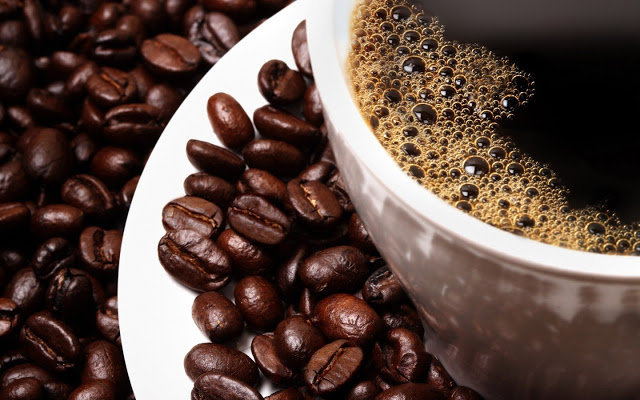The Development of Coffee: from Instant to Fine Coffee

For professional baristas, please follow the coffee workshop (Wechat official account cafe_style)
When you enter the cafe, most of the Italian names such as "latte" are printed on the menu, as if Italy is the source of coffee. I still remember that when we went to the Ice Room Tea Restaurant with our elders when we were young, the names we most often heard were "frozen lemon coffee" and "fast coffee". If we asked the local old man what "cappuccino" was, he would probably be confused!
Two generations, two kinds of understanding, when did this generation gap begin? From the emergence of the first cafe in the 16th century to the mid-20th century, people drank coffee only for religion, caffeine, or for the unique social and cultural atmosphere of the cafe, as it has been for centuries. But in the decades since World War II, people's pursuit of the taste of coffee has changed dramatically.
In the past, European families went to the market for groceries, mostly including raw coffee beans. A small amount of baking every week, self-sufficient. However, with the rise of the industrial revolution, large enterprises have made instant coffee packaging a fashion. Freshly baked and ground? The culture is gradually forgotten. The so-called first wave of coffee is the mass production and cheap goods previously drunk in ice rooms and tea restaurants, which have no quality at all, so they must be mixed with milk and sugar to reconcile the bitterness.
Coffee = Italian
Espresso, which represents the second wave, originated after World War II. European immigrants revived the roasting process in the United States, using the then advanced technology, the espresso machine, to make espresso at high temperature and high pressure. Later, Starbucks chains swept the United States, and even the whole world equated "coffee with Italian style." When talking to today's young people about coffee, most of them will think of the milk bubbles (commonly known as pull flowers) with different shapes on the coffee. This is the product of the last wave.
Granny's method is the best.
actually? You don't need any electronic machinery to make high-quality coffee, just a pot of hot water and a funnel. A foreign guest once said, "this is clearly my grandmother's ancient way of making coffee!" How can it be top grade? " What the third wave emphasizes is the use of handicrafts to combat mechanization. Adjust the laws and regulations, return to basics, and elaborate the production process: a cup of coffee used to be charred by charcoal fire, ground by stone into powder, and then boiled with boiling water. What we are doing now contains scientific data and the precipitation of contemporary taste aesthetics. Unlike espresso with milk foam, boutique coffee pursues regional style and does not need to be added.
Recently, someone asked the author "will there be a fourth wave in the future". My response is to first find out what level should be used to define the wave. If so? Cooking and extraction technology to define, in fact, since 2010, some people have proposed to change the pressure? Italian concentration (pressure profile) is a mechanical breakthrough to explain the advent of the fourth wave.
But from a distant point of view, technological breakthroughs are inseparable from the boundaries of taste. The third wave of coffee has realized the chemical potential of this small fruit itself, from the refreshing of caffeine to now through craft-like planting, processing, roasting and extraction. This wave just bears witness to man's appreciation and fine taste of nature.
Patrick Tam / tr. by Phil Newell)
(owner of boutique coffee shop Knockbox, approved barista of American and European boutique baristas association, American CQI recognition cup tester, the first Hong Kong judge of Cup of Excellence)
Important Notice :
前街咖啡 FrontStreet Coffee has moved to new addredd:
FrontStreet Coffee Address: 315,Donghua East Road,GuangZhou
Tel:020 38364473
- Prev

The Development of Coffee: from Instant to Fine Coffee
For the exchange of professional baristas, please follow the coffee shop (official Wechat account cafe_style). Most of the menu is printed with Italian names such as latte, as if Italy is the source of coffee. I still remember that when we went to the Ice Room Tea Restaurant with our elders when we were young, the names we most often heard were frozen lemonade and fast caffeine. If you ask the local old man what cappuccino is, he will probably be confused!
- Next

Coffee taste guide: coffee with sour is normal.
Professional baristas exchange please follow the coffee workshop (Wechat official account cafe_style), the pursuit of sweet and sour bitter balance since childhood to drink coffee in the restaurant, no matter what the price, grade of coffee, must be a little bitter. Children have the most frank taste buds and are mostly resistant to coffee. This is actually the nature of animals (innately aversive); poisons in nature, including caffeine, are
Related
- Beginners will see the "Coffee pull flower" guide!
- What is the difference between ice blog purified milk and ordinary milk coffee?
- Why is the Philippines the largest producer of crops in Liberia?
- For coffee extraction, should the fine powder be retained?
- How does extracted espresso fill pressed powder? How much strength does it take to press the powder?
- How to make jasmine cold extract coffee? Is the jasmine + latte good?
- Will this little toy really make the coffee taste better? How does Lily Drip affect coffee extraction?
- Will the action of slapping the filter cup also affect coffee extraction?
- What's the difference between powder-to-water ratio and powder-to-liquid ratio?
- What is the Ethiopian local species? What does it have to do with Heirloom native species?

